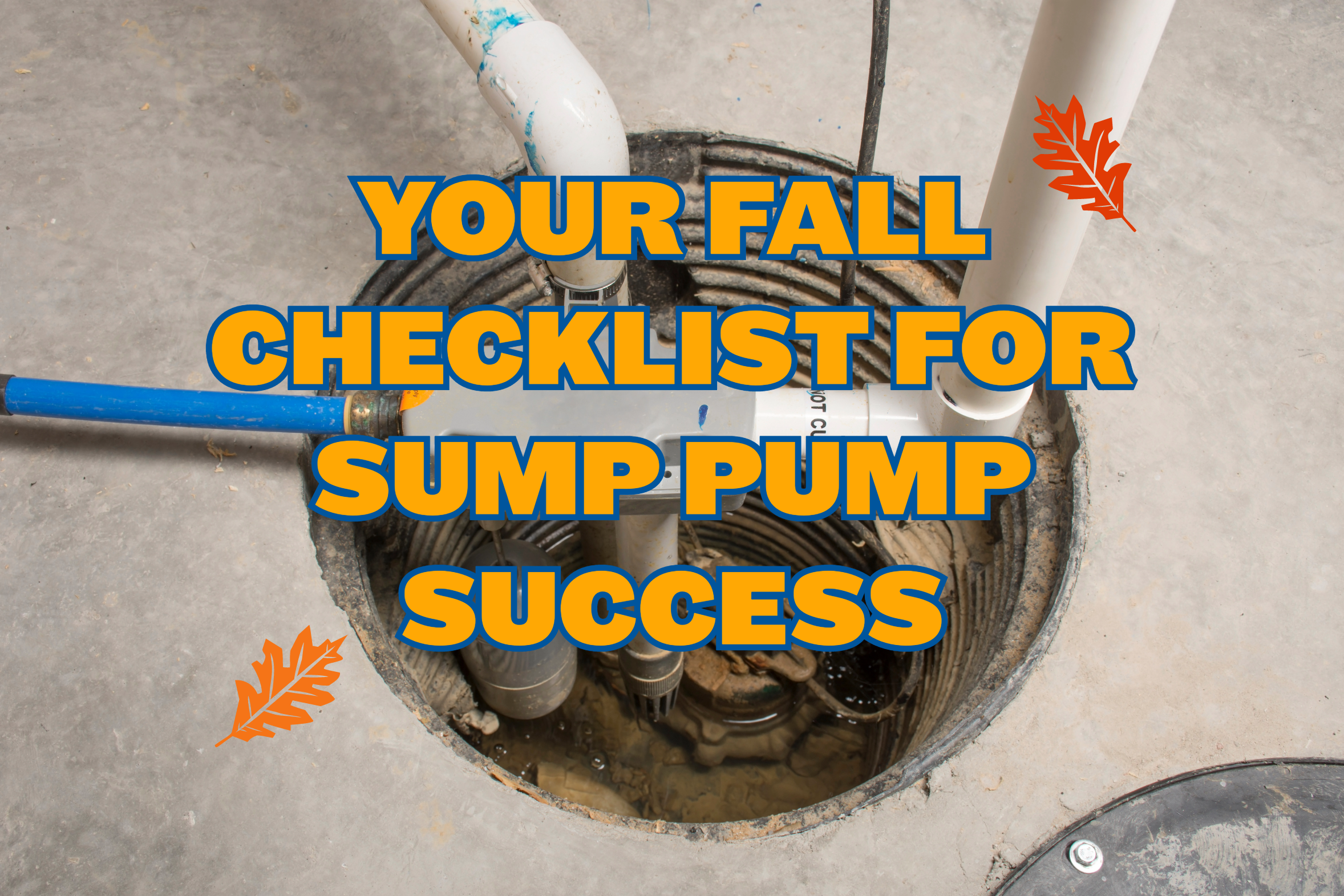Sump pumps are essential all year round, but they actually play an especially crucial role during the fall and winter months in regions that experience cold weather and snowfall. So, for us Ohioans, caring for our sump pumps is a must-do. Here are a few tips and tricks from your Beavercreek Plumbing & Drain experts that you can do this fall for your sump pump to succeed in the colder months ahead:
YOUR FALL CHECKLIST FOR SUMP PUMP SUCCESS:
- Take off the Cover: Open the sump pump pit or basin by removing its cover. Once the lid has been removed, take a quick peek at the interior. If you come across any debris, mud, or rocks, you should carefully remove them. Foreign objects of this nature can obstruct the sump pump and lead to overflow issues.
- Check the Drain Hose: Examining the drain hose thoroughly is another good idea. So, be sure to verify that the drain hose is securely connected and free from obstructions or ice buildup (in the winter). A blocked or frozen drain hose can result in your sump pump running continuously because it cannot effectively discharge the accumulated water from its pit.
- Inspect the Inlet Screen: Clean the inlet screen to ensure it allows for the entry of water into your sump pump’s pit. If the inlet screen is blocked, water will be prevented from accessing the sump pump’s pit, potentially resulting in a flooded basement.
- Look at the Float Mechanism: Ensure the proper function of the float mechanism in your sump pump, as it determines when the pump activates to remove excess water. Confirm that the float component can move without obstruction. A malfunctioning float can lead to your pump either failing to operate when needed or running continuously, potentially causing damage to the pump’s engine over time.
- Inspect the Discharge Pipe: Confirm that the water discharged by your sump pump flows away from your house. When you hear your sump pump operating, take a moment to inspect the discharge pipe’s location outside. Confirm that it directs water at a safe distance away from your home. If the discharge point is too close, there’s a risk of water seeping back into the pump, causing it to run continuously and inefficiently. Excessive operation can increase the likelihood of premature wear and tear on your sump pump, potentially shortening its lifespan. But remember, while it’s crucial to avoid placing your discharge pipe too close to your home, outbuildings, or other structures, it’s equally important to ensure that it remains within the boundaries of your property. Discharging excess water onto your neighbor’s property is never a good idea. Maintaining proper drainage within your property boundaries is essential to avoid inconvenience to your neighbors.
- Do a Test Run: To activate your pump, add a bucket of water to the sump pit. Then, its performance should be observed closely to ensure efficient water removal. Afterward, try inspecting the discharge pipe outside to confirm proper water disposal. If the pump fails to run, try making sure it is still connected to the power source and that its power cord is in good working condition.
- Prepare for the Unexpected: Having a backup battery or generator is extremely beneficial, especially during severe rainstorms that might coincide with a power outage. When you have a backup plan in place, it gives you that little extra peace of mind, knowing everything will be taken care of if the power goes out or something unforeseen happens.
To ensure your sump pump functions properly during the coldest months of the year, proper fall winterization is crucial for your sump pump system to succeed and help protect your home from potential water damage during the cold months.
Having trouble with your sump pump? Don’t delay; call Beavercreek Plumbing & Drain today at (937) 404-6575, or schedule an appointment online now by clicking here!




